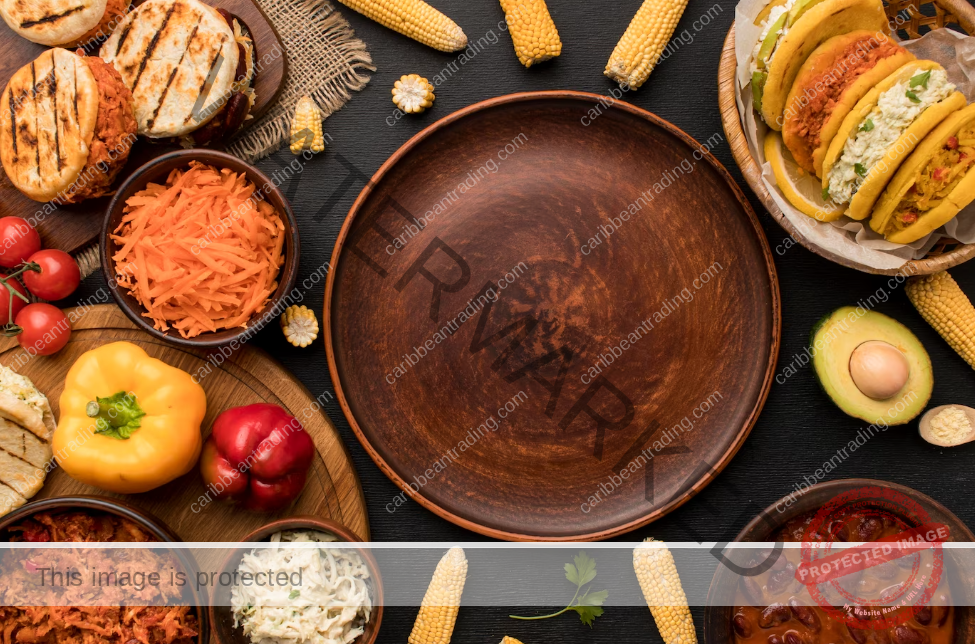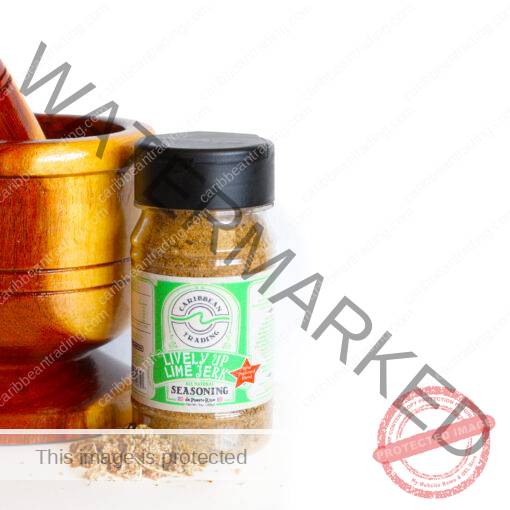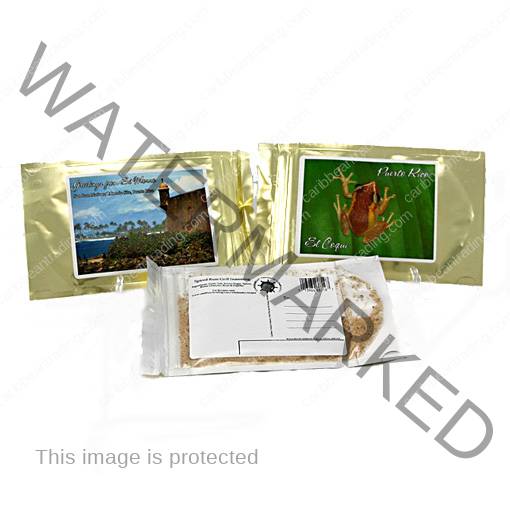Caribbean Lifestyle, Food & Recipes
Caribbean Cuisine Flavoring: The Best Combinations to Try
Caribbean cuisine flavoring is vibrant and diverse, with a culinary tradition shaped by a fusion of influences from African, European, Indigenous, and Asian cultures. It encompasses the cooking styles and ingredients in the Caribbean islands, including Cuba, Jamaica, Puerto Rico, Haiti, etc.
One of the defining features of Caribbean dishes is its bold and flavorful use of spices and herbs. Commonly used seasonings include allspice, ginger, nutmeg, cinnamon, and cloves, which give Caribbean dishes their distinctive taste.
Additionally, the cuisine often incorporates tropical fruits such as mangoes, papayas, and coconuts, as well as staples like beans, rice, plantains, and yams.
It’s important to note that while there are shared culinary traditions across the Caribbean, each island and country has unique specialties and flavors. This diversity results from the varied cultural influences and local ingredients found in each place.
Best Puerto Rican Flavors and Seasonings
Puerto Rican cuisine is known for its vibrant and flavorful dishes. Here are some of the best flavors and seasonings that are commonly used in the cooking of the Island of Enchantment:
Sofrito
It is a popular aromatic base in various cuisines, particularly Latin American, Caribbean, and Mediterranean cooking. It is typically a blend of aromatic ingredients that are finely chopped, sautéed, and used as a flavoring agent in many dishes.
The exact composition of sofrito can vary depending on the region and the specific recipe. Still, it generally includes a combination of ingredients such as onions, garlic, bell peppers, tomatoes, and herbs. These ingredients are minced or finely diced to release their flavors and then cooked together in oil or fat.
This flavoring is the foundation for many dishes, adding depth and complexity to stews, soups, rice dishes, beans, sauces, and marinades. It is often used as a starting point for preparing dishes like arroz con pollo, paella, picadillo, and many others.
Adobo
Another popular Puerto Rican cooking technique and dish is marinating and braising meat in a mixture of vinegar, soy sauce, garlic, and spices. The term “adobo” comes from the Spanish word “adobe,” which means “to marinate” or “to season.”
The traditional ingredients used in adobo include vinegar, pepper sauce, garlic, black peppercorns, and bay leaves. The meat is typically marinated in this mixture for a period to allow the flavors to penetrate. After marinating, the meat is simmered with additional water or broth until tender.
It works as a versatile dish, and variations can be found throughout the Caribbean and even in other countries like the Philippines. Variations may incorporate coconut milk, sugar, or different types of meat or seafood. It can also be made with pork, chicken, beef, seafood, or vegetables.
Many love it for its tangy, savory, and slightly sour taste. It is often served as a main course or a viand and pairs well with steamed rice or bread. The dish has gained international popularity due to its unique flavors and is enjoyed by many worldwide.
Sazón
Sazón is a culinary term commonly used in Latin American and Caribbean cuisine. It refers to a seasoning blend or flavoring mixture that adds color and flavor to various dishes. The word “sazón” is derived from the Spanish word for “seasoning” or “flavor.”
The exact composition of sazón can vary depending on the region and personal preferences, but it is usually made of a combination of spices, herbs, and other ingredients. The primary purpose of sazón is to enhance the taste and aroma of the dish, giving it a distinctive and flavorful character.
A key ingredient in many sazón mixes is achiote (annatto), which gives the seasoning its characteristic reddish color. Other components include garlic, onion, cumin, coriander, oregano, and salt. Some mixes include spices like paprika, turmeric, or chili powder.
Sazón is often used in rice, stews, soups, beans, and marinades. It can be sprinkled directly onto the ingredients during cooking or added to sauces and other preparations. The seasoning blend is known for imparting a savory and slightly tangy flavor to its dishes, contributing to the vibrant and aromatic profile of Latin American and Caribbean cuisines.
Recaíto
One of the most traditional seasonings used in Puerto Rico. It is a flavorful blend of herbs and vegetables that can completely change a taste. It includes cilantro (coriander leaves), culantro (a leafy herb similar to cilantro), onions, garlic, peppers (such as ají dulce or bell peppers), and sometimes tomatoes.
The preparation consists of combining the ingredients and then blending or finely chopping them together. The resulting mixture is used as a base or seasoning in various dishes, such as stews, rice dishes, beans, soups, and sauces. It adds a vibrant green color and a distinct flavor to the dishes used.
Considered a staple ingredient in Puerto Rican cooking, it’s a building block for many traditional recipes. It imparts a fresh and herbal taste that enhances almost every dish. Similar to sofrito, it tends to have a stronger emphasis on the herbs and vegetables used.
Mojo
This term typically refers to a tangy and citrusy marinade or sauce commonly used in Caribbean cuisine. The word “mojo” originates from the Spanish and Portuguese word “mojito,” which means “sauce” or “marinade.”
The flavor typically consists of a combination of ingredients such as citrus juices (such as orange, lime, or lemon), garlic, olive oil, herbs (such as oregano or cilantro), and spices (such as cumin or paprika). These ingredients are blended to create a zesty and aromatic sauce or marinade.
Before grilling or roasting, most people use it to marinate meats, particularly pork, and chicken. It infuses the meat with tangy, garlicky, and citrusy flavors, making it tender and delicious. It can also be used as a dipping sauce or dressing for various dishes, adding flavor.
Different regions and countries have their variations of mojo flavoring. For example, in Cuban cuisine, “mojo criollo” is a popular version made with sour orange juice and garlic. In the Canary Islands, a similar sauce called “mojo picón” is prepared with paprika, garlic, chili peppers, vinegar, and other spices.
Annatto
Also known as achiote, it’s a natural food coloring and flavoring derived from the seeds of the achiote tree (Bixa Orellana). The achiote tree is native to tropical regions of the Americas and is cultivated for its bright red seeds, which contain the pigment used to produce annatto.
This flavoring has a long history of culinary and cultural use. It is commonly used in Latin American and Caribbean cuisines, as well as in some traditional dishes from other regions. The seeds are typically ground into a powder or infused in oil or water to extract the vibrant red color and distinctive flavor.
The primary use of annatto is as a food coloring agent. It imparts a yellow-to-orange hue to various dishes, including rice, stews, soups, sauces, and cheeses. It colors products such as butter, margarine, and processed foods like cheese, snacks, and condiments.
In addition to its coloring properties, it also has a mild, slightly sweet, and peppery flavor. Still, people do not use it for its taste alone but for its visual appeal. However, some traditional recipes require annatto to contribute a subtle earthy flavor.
Indigenous populations have used it for centuries, including body painting, natural dyeing, and traditional medicine. Thanks to its properties, it is also used in some cosmetic and pharmaceutical products.
Conclusion
Caribbean cuisine flavoring offers a tempting array of dishes resulting from a rich culinary heritage and a blend of diverse cultural influences. From spicy heat to tropical sweetness, Caribbean food is known for its bold and vibrant flavors that leave a lasting impression on the taste buds.
Also, remember that you can find many of these species and flavors at our stores of Caribbean Trading, both online or in local stores.







